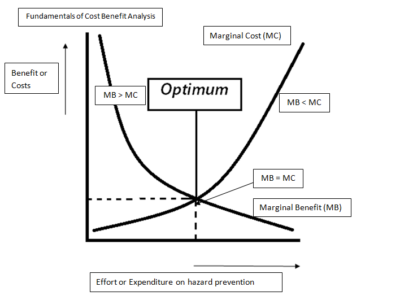 An EPA rule-making on cost-benefit analysis was supposed to be a big win for conservatives and industry. They want to rig cost-benefit analysis by counting all of a regulation’s costs but only some of the benefits. But the EPA proposal issued last week appears to give them only a token victory. The issue involves what are …
An EPA rule-making on cost-benefit analysis was supposed to be a big win for conservatives and industry. They want to rig cost-benefit analysis by counting all of a regulation’s costs but only some of the benefits. But the EPA proposal issued last week appears to give them only a token victory. The issue involves what are …
Continue reading "Trump EPA Takes Aim at Cost Benefit Analysis; Misses"
The post Trump EPA Takes Aim at Cost Benefit Analysis; Misses appeared first on Legal Planet.
#costbenefit #bigwin https://legal-planet.org/wp-content/uploads/2018/11/cost-benefit-analysis-400x300.png https://legal-planet.org/2020/06/09/trump-epa-takes-aim-at-co-benefits-misses/
An EPA rule-making on cost-benefit analysis was supposed to be a big win for conservatives and industry. They want to rig cost-benefit analysis by counting all of a regulation’s costs but only some of the benefits. But the EPA proposal issued last week appears to give them only a token victory.
The issue involves what are called co-benefits, which are positive side-effects of a regulation. For instance, suppose EPA issues a rule to reduce CO2 emissions from coal-fired power plants. As a side-effect, the regulation would cause emissions of dangerous particulates to plunge. That’s a co-benefit. If industry and conservatives got their way, the cost-benefit analysis would include only the climate benefits of the regulation, not its health benefits.
EPA recently took a step in that direction with a revised analysis of a rule limiting mercury emissions from power plants. It justified excluding co-benefits due to the special statutory provision applying in that case. Everyone expected that the new proposal would try to do something similar on a much broader scale.
Surprisingly, the proposed regulation doesn’t do so. Instead, Trump’s EPA doesn’t limit which benefits should be considered in regulations under the Clean Air Act. It would require a separate presentation of direct benefits and total benefits (with co-benefits added) — but only in the preface of a cost-benefit analysis, not in the analysis itself.
Other commentators have been treating the proposal as eliminating consideration of co-benefits. In announcing the proposed rule, EPA head Wheeler said that it banned justifying a rule by reference to co-benefits. Maybe I’m missing something, but I just don’t see that in the language of the proposal.
In fact, it seems to me that the rule clearly does not affect consideration of co-benefits. As the summary of the proposal says, “EPA proposes additional procedural requirements to increase transparency in the presentation of the BCA results, while maintaining the standard practices of measuring net benefits.” The proposal also says that EPA “is not proposing to specify how or whether the results of the BCA should inform significant CAA regulatory decisions.”
The proposal defines regulatory benefits broadly, as “the positive changes in societal well-being incurred as a result of the regulation or policy action.” That clearly includes co-benefits. It uses similar language to define costs. Thus, it does not endorse the idea that benefits should be defined more restrictively than costs.
Other portions of the proposal also push back against the conservative idea of treating regulatory benefits differently than regulatory costs. That distinction is fundamental to the argument for considering all costs but only some benefits.
The preamble to the proposal points out that costs and benefits are just different ways a regulation impacts society’s welfare. They are given distinct treatment in the analysis primarily for practical reasons, because they use different methodologies. A footnote in the proposal’s preface also points out that the way items are classified as costs or benefits can be somewhat arbitrary. Some items that theoretically should be considered costs are handled instead on the benefit side of the balance sheet (as decreases in benefits).
Overall, the EPA proposal seems to me like a defeat for the effort to exclude co-benefits from consideration. It relegates this distinction to the preamble of future cost-benefit analyses, excluding it from the cost-benefit analysis itself. It suggests that in general costs and benefits should be subject to the same rules. And as I noted earlier, the preface to the EPA proposal specifically says that the proposal does not affect how the cost-benefit analysis should be used in making actual regulatory decisions.
There may well be other problems with the new proposal — after all, it does come from the Trump EPA. But, the proposal seems fairly innocuous on its face in terms of co-benefits. Perhaps the worst features were cut at the behest of Administration economists. From the start, the campaign against co-benefits has been purely political, since no economist would advocate ignoring subsets of regulatory benefits.
Ignoring co-benefits means passing up the opportunity to issue regulations that would make society as a whole better off. That makes no sense from an economist’s perspective. Really, it makes no sense from the perspective of anyone who cares about the public interest.
The post Trump EPA Takes Aim at Cost Benefit Analysis; Misses appeared first on Legal Planet.
By: Dan Farber
Title: Trump EPA Takes Aim at Cost Benefit Analysis; Misses
Sourced From: legal-planet.org/2020/06/09/trump-epa-takes-aim-at-co-benefits-misses/
Published Date: Tue, 09 Jun 2020 14:40:08 +0000
Vist Maida on Social Me
Website Links
Maida Law Firm - Auto Accident Attorneys of Houston, by fuseology
No comments:
Post a Comment